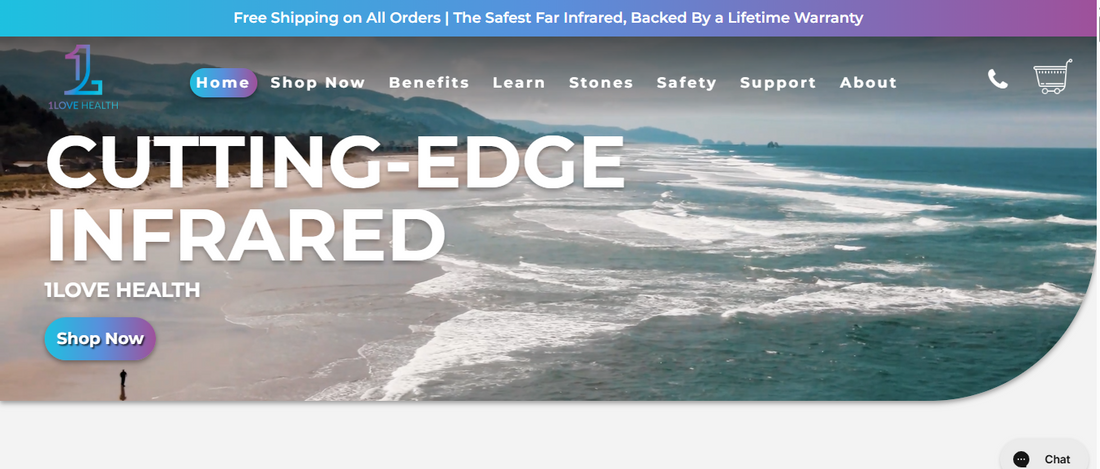
Custom Shopify PDP Development of 1love Health — Built for SEO, UX, and Scalability
From complex catalogs to clean conversions: how a from-scratch PDP let shoppers switch between three pro-grade products—Ultimate Pro, Luxor Pro, and Vital Pro—while keeping pages lightning-fast and fully indexable.
Problem (fragmented SKUs, fractured UX)
Three separate products lived in three separate PDPs. Each had its own gallery, specs, and availability—but the buying journey felt disjointed. Shoppers had to pogo-stick between tabs and pages to compare, while search engines split authority across near-duplicate templates.
Complications we had to solve, all at once:
- Distinct identities per product (images, feature bullets, spec tables).
- Shared variant system (Color: White / Black; Size: Standard / XL / XLT; Quantity).
- No page reloads as users switch between products or variants.
- SEO safety so each product stays crawlable, indexable, and eligible for rich results.
- Performance that meets Core Web Vitals—no heavy theme bloat, no hydration lag.
Process
1) Single PDP, multiple identities (data-first architecture)
We built a content model that treats each product identity as a self-contained “pack”:
- Metaobjects / metafields for: hero gallery, lifestyle set, tech specs (tables), feature callouts, PDFs, and FAQs—scoped to Ultimate Pro, Luxor Pro, or Vital Pro.
- Slot-based rendering in Liquid + Sections: the template reads the selected identity and injects the right content pack into predefined slots (gallery → features → specs → FAQs).
- Inventory + pricing mapping: each identity’s variants (Color / Size) map 1:1 to real Shopify variants for accurate price, SKU, and stock.
Result: one template, three fully distinct stories.
3) SEO-safe routing & structured data
Dynamic UX, static-friendly SEO:
-
Dedicated handles: each identity has its own clean URL (e.g.,
/products/ultimate-pro) that loads the unified template with that identity preselected. -
Canonical discipline: each handle self-canonicals, preventing consolidation errors while avoiding duplicate content across identities.
-
JSON-LD: per-handle Product schema with the correct name, images, GTIN/SKU, price, availability, and
hasVariantentries that reflect Color/Size options. Reviews markup remains stable to preserve stars. - Breadcrumbs + sitemap: identity URLs are included in sitemaps and breadcrumbs for clearer internal linking and richer snippets.

4) Performance hygiene
- Critical CSS for the hero and above-the-fold specs; defer the rest.
- Section Rendering API only when needed (e.g., review blocks on interaction).
- Idle hydration: we mount non-critical widgets after input or idle to protect INP.
5) Decision clarity (persuasion where it matters)
- Confidence stack above the fold: delivery window, returns, and warranty adjacent to the CTA.
- Spec clarity: identity-specific spec table + downloadable PDF; microcopy explains size differences (Standard / XL / XLT).
-
Comparison micro-panel: quick “What’s the difference?” callout between Ultimate, Luxor, Vital—so users don’t bounce to Google for answers.
Results
- PDP efficiency: Shoppers move from browse to cart with fewer hesitations; more visitors complete color/size selections and reach Add to Cart with confidence.
- SEO impact: Product handles become easier to discover, with clearer snippets and healthier organic visibility over time.
- Conversion & revenue quality: Buying friction drops, leading to steadier conversion and stronger order values as users choose the right configuration the first time.
-
Experience speed: Pages feel faster on first load and stay responsive during interactions (variant changes, image swaps, spec toggles).
Why this build matters
You get the best of both worlds: a streamlined journey for shoppers and a search-friendly structure for growth. Each product keeps its identity and authority, while your storefront stays maintainable and ready to scale.
Ready to unify complex products into one high-converting PDP?
Let’s architect a custom, SEO-safe PDP that feels instant, tells the right story for every variant, and scales with your roadmap.
Let’s optimize your store